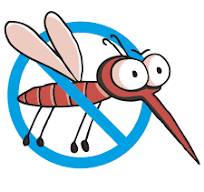Here's a comprehensive overview of malaria:
Definition
Malaria is a life-threatening disease caused by parasites of the genus Plasmodium. It is transmitted through the bite of an infected female Anopheles mosquito.
History
Malaria has been a significant human disease for thousands of years. The name "malaria" comes from the Italian words "mal" (bad) and "aria" (air), as it was once believed that the disease was caused by bad air.
Causes
Malaria is caused by five species of Plasmodium parasites:
1. Plasmodium falciparum (most deadly)
2. Plasmodium vivax
3. Plasmodium ovale
4. Plasmodium malariae
5. Plasmodium knowlesi
Transmission
Malaria is transmitted through:
1. Mosquito bites: Infected female Anopheles mosquitoes transmit the parasites.
2. Blood transfusions: Rarely, malaria can be transmitted through blood transfusions from an infected donor.
3. Organ transplantation: Malaria can be transmitted through organ transplantation from an infected donor.
4. Congenital transmission: In rare cases, malaria can be transmitted from mother to child during pregnancy.
Symptoms
Malaria symptoms typically begin within 10-15 days after infection and may include:
1. Fever
2. Chills
3. Flu-like symptoms
4. Headache
5. Muscle and joint pain
6. Fatigue
7. Nausea and vomiting
8. Diarrhea
9. Abdominal pain
Diagnosis
Malaria diagnosis is typically made through:
1. Physical examination
2. Medical history
3. Laboratory tests:
- Blood smears
- Rapid diagnostic tests (RDTs)
- Polymerase chain reaction (PCR)
Treatment
Malaria treatment depends on the severity of the disease and the species of Plasmodium:
1. Uncomplicated malaria:
- Artemisinin-based combination therapies (ACTs)
- Chloroquine
- Sulfadoxine-pyrimethamine
2. Severe malaria:
- Intravenous artesunate
- Quinine
- Supportive care (e.g., fluid replacement, oxygen therapy)
Prevention
Malaria prevention measures include:
1. Vector control:
- Insecticide-treated bed nets (ITNs)
- Indoor residual spraying (IRS)
- Larval control
2. Chemoprophylaxis:
- Antimalarial medications for travelers to endemic areas
3. Vaccination:
- RTS,S vaccine (approved for use in children in sub-Saharan Africa)
Epidemiology
Malaria is a significant public health problem in many parts of the world:
1. Distribution: Malaria is endemic in 109 countries, with the majority of cases occurring in sub-Saharan Africa.
2. Incidence: According to the World Health Organization (WHO), there were 241 million reported cases of malaria in 2020.
3. Mortality: Malaria is responsible for approximately 627,000 deaths annually, mostly among children under five.
Challenges
Despite progress in malaria control, several challenges remain:
1. Resistance to antimalarial medications
2. Inadequate funding for malaria control programs
3. Limited access to healthcare services in endemic areas
4. Climate change and its impact on malaria transmission
Future Directions
To achieve malaria elimination, future efforts should focus on:
1. Developing more effective and sustainable malaria control strategies
2. Improving access to healthcare services and antimalarial medications
3. Enhancing surveillance and monitoring systems
4. Promoting research and development of new tools and technologies


